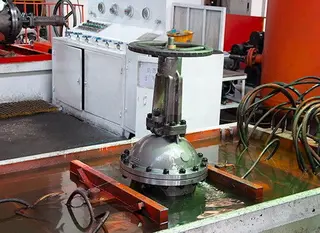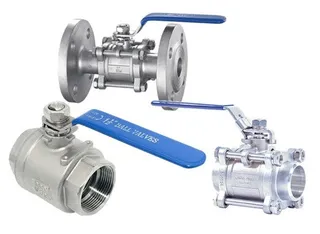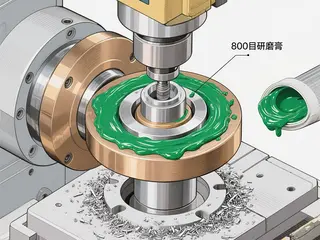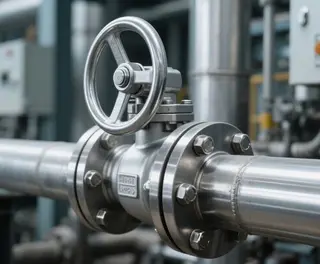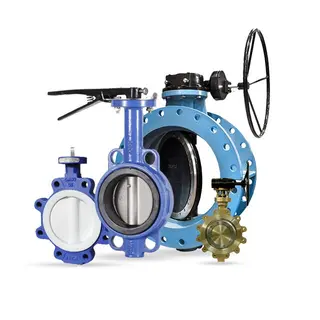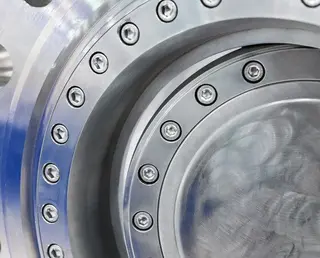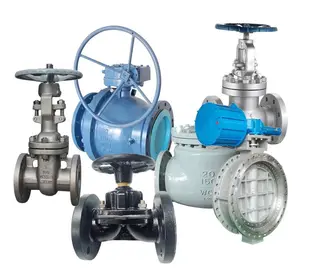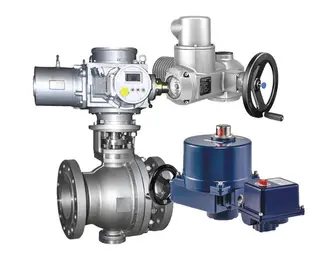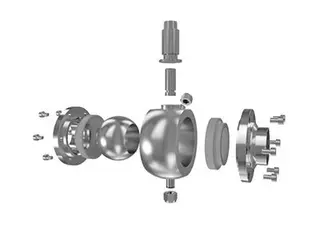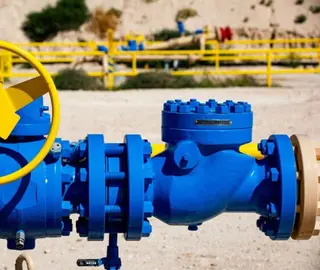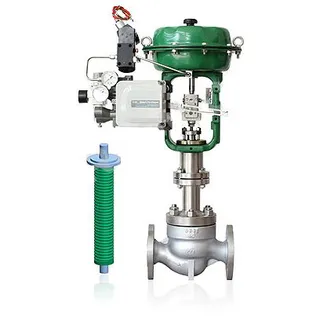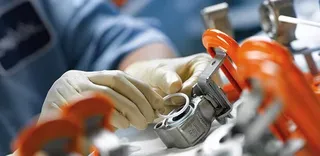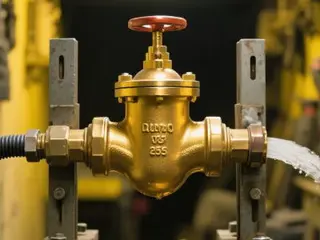Guide to Valve Leakage Levels and Airtightness Testing
In industrial production, valves are like the "goalkeepers" of pipeline systems, and their sealing performance is directly related to production safety and efficiency. Even a small valve leak, in mild cases, can cause material waste and equipment damage, and in severe cases, can lead to serious safety accidents, bringing huge economic losses to enterprises. Therefore, understanding valve sealing leakage levels and mastering correct airtightness testing methods are particularly important.
This article will give you a detailed explanation of valve leakage level standards, the principles and methods of airtightness testing, and solutions to leakage problems, helping you build a strong "safety barrier" for industrial production.
Valve Leakage Levels
Valve leakage level is an important indicator for measuring its tightness when closed, and different application scenarios have different requirements for valve sealing performance. In order to meet these diversified needs, various international valve leakage level standards have been formulated. The following introduces several commonly used standards in detail:
1. ANSI/FCI 70-2 (American Fluid Control Institute Standard)
ANSI/FCI 70-2 is one of the most widely used standards, dividing valve leakage levels into six grades, from Class I to Class VI. Class I has the largest allowable leakage amount and relatively poor sealing performance, while Class VI has the smallest allowable leakage amount, representing the strictest sealing performance, usually referred to as "bubble-tight sealing" or "zero leakage." However, it should be noted that in actual application, Class VI is not absolute zero leakage, but refers to an extremely small leakage amount within an acceptable range.
This standard applies to various types of valves, including ball valves, gate valves, globe valves, etc., and is widely used in the petroleum, chemical, and natural gas industries, providing a clear evaluation basis for valve sealing performance in these fields.
2. ISO 5208 (International Organization for Standardization Standard)
The ISO 5208 standard defines pressure tests for valves, including leakage tests. It specifies different allowable leakage amounts according to valve type and pressure class. This standard comprehensively considers various factors in actual working conditions, such as medium characteristics, temperature, and pressure, to ensure that the valve can meet the corresponding sealing requirements under different operating conditions.
ISO 5208 applies to various industrial valves, and its rigor and scientific nature make it widely recognized and applied globally, providing a unified specification for valve sealing performance testing.
3. DIN EN 12266 (European Standard)
DIN EN 12266 is the European valve leakage testing standard, which also specifies in detail the valve leakage testing procedures and defines different leakage levels. It is widely adopted in Europe, providing a unified sealing performance evaluation system for valve manufacturers and users. This standard focuses on sealing reliability during actual valve use, and its test methods and requirements fully take into account the special needs of European industrial production, ensuring good sealing performance under complex working conditions.
4. GB/T 26480 (Chinese National Standard)
GB/T 26480 is China's national standard, equivalent to ISO 5208, which clearly specifies shell tests, sealing tests, etc., for various industrial valves. The formulation of this standard allows China's valve industry to be in line with international standards, providing strong support for improving the quality of domestic valves and enhancing competitiveness in the international market.
It applies to the production and inspection of all types of industrial valves in China, and its scientific and practical nature has been widely recognized by the domestic valve industry.
Note: Different standards may have subtle differences in the definition of allowable leakage amounts and test methods. In practical application, which standard to adopt should be determined according to specific working conditions and customer requirements. For example, in chemical production environments with extremely high sealing requirements, ANSI/FCI 70-2 Class VI may be preferred, while in general industrial applications, ISO 5208 or GB/T 26480 may be sufficient.
Principles and Methods of Valve Airtightness Testing
Valve airtightness testing is an important step to ensure sealing performance. Its purpose is to verify the ability of the valve, in a closed state, to prevent the medium (liquid or gas) from passing through the sealing surface, and whether there is leakage from the valve body or permeable parts to the outside. Only through strict airtightness testing can the safety and reliability of the valve in actual use be ensured.
1. Testing Principle
The basic principle of airtightness testing is to apply a certain pressure to the valve, then measure the amount of leakage within a set period of time. If the leakage amount exceeds the preset standard, the valve's airtightness is judged to be unqualified.
This principle is based on fluid mechanics – under a certain pressure difference, the medium will leak through the sealing surface or weak points of the valve body. By accurately measuring the leakage amount, the sealing performance of the valve can be precisely evaluated.
2. Testing Methods
According to different testing positions and mediums, common valve airtightness testing methods include:
Sealing Test
Used to detect leakage through the valve seat sealing surface when the valve is closed. It can be divided into:
Gas Test: Usually uses air or nitrogen as the medium, applying a specified test pressure on one side and detecting leakage on the other side. Advantages: simple operation, low cost, quick detection of large leakage points. Often uses a gas leak detector to measure concentration changes, suitable for detecting small leaks.
Liquid Test: Usually uses water as the medium, with leakage judged visually by droplet formation or wet marks. Advantages: intuitive results, low cost, easy access to water. It is necessary to ensure the valve and test pipeline are clean.
Shell Test (Strength + Airtightness)
Used to detect whether the valve body or bonnet has leakage or rupture under a set pressure higher than the working pressure. This ensures the airtightness and mechanical strength of the valve. Requires precision control of test pressure and monitoring through test equipment.
Several Different Valve Leakage Detection Methods
In addition to the above common sealing test and shell test, there are also some special valve leakage detection methods suitable for different application scenarios and detection needs:
1. Bubble Method
When using the bubble method for valve leakage detection, a certain pressure of tracer gas is first charged into the valve, and then the valve is placed into liquid. If the valve has a leakage point, the gas will pass through the leak hole into the surrounding liquid, forming bubbles. The location where the bubbles form is the location where the leak hole exists. Usually, leakage is judged by manual close observation to see whether bubbles are generated. The advantage of the bubble method is that it is simple and intuitive, suitable for detecting relatively large leakage points in valves. However, the detection accuracy of this method is relatively low, and it is not effective for detecting very small leaks.
2. Soap Solution Method
The soap solution method is similar to the bubble method, also charging a certain pressure of tracer gas into the valve, but the difference is that soap solution is applied to the suspected leak location. When gas escapes from the leak hole, soap bubbles will form in the soap solution. By observing the formation and size of the soap bubbles, the leakage location and degree can be determined. The advantage of the soap solution method is that it is simple to operate, low in cost, and can intuitively display the leakage situation. It is suitable for detecting small leakage points in valves, especially in some parts that are difficult to directly observe, and can effectively detect potential leakage hazards.
3. Special Tracer Substance Method
The special tracer substance method is a relatively advanced valve leakage detection method. A certain pressure of tracer fluid containing special tracer substance is charged into the valve, and when the special tracer substance escapes from the leak hole, a special tracer substance detection device is used to locate the leak hole. The most common special tracer substance is helium, used together with a helium mass spectrometer leak detector. Helium has good permeability and low density characteristics, enabling it to quickly pass through very small leakage points, and the helium mass spectrometer leak detector has extremely high sensitivity, capable of detecting extremely low concentrations of helium, thereby achieving precise detection of very small leaks. This method is suitable for valve detection with extremely high sealing performance requirements, such as in the aerospace and nuclear industries, and can effectively ensure the safe operation of critical equipment.
4. Hydrostatic Method
The hydrostatic method is a traditional valve leakage detection method. First, the valve interior is filled with water, then water is pumped in with a water pump, and the surroundings of the valve are observed to see whether there is water leakage. Usually, whether the valve has leakage is judged by direct manual observation of whether water is leaking. The advantage of the hydrostatic method is that it is simple to operate, low in cost, and can intuitively detect relatively large leakage points. However, the detection accuracy of this method is relatively low, it is not effective for detecting very small leaks, and during the detection process, it is necessary to ensure the cleanliness of the valve and pipeline system to avoid impurities in the water affecting the detection results.
5. Ultrasonic Method
The ultrasonic method is a method of valve leakage detection using the principle of ultrasound. The audible frequency part of the leakage sound is cut off, and only the ultrasonic part is amplified to detect the leakage. Usually, staff directly use an ultrasonic detector, and determine whether there is leakage according to whether the detection instrument pointer moves. Frequency conversion technology can also be used to convert ultrasonic signals into signals audible to the human ear, so that staff can judge the leakage situation more intuitively. The advantage of the ultrasonic method is that it has fast detection speed, high sensitivity, and can detect very small leaks. It is suitable for leakage detection of various types of valves, especially in some parts that are difficult to directly access, and can effectively detect potential leakage hazards.
6. Pressure Drop Method
The pressure drop method is a method of detecting valve leakage by monitoring pressure changes. The compressor is connected to the valve, then pressurized, and when the pressure rises to a certain value, pressurizing is stopped, and the valve is closed, leaving it for a period of time. If the pressure drops sharply, it can be judged that the leakage rate is large; if the pressure does not change much, it can be considered that the leakage rate is small or there is no leakage. Usually, staff directly use a pressure gauge and determine whether there is leakage according to the magnitude of the change in the pressure gauge pointer reading. The advantage of the pressure drop method is that it is simple to operate, low in cost, and can fairly accurately determine the degree of leakage. However, the detection accuracy of this method is relatively low, it is not effective for detecting very small leaks, and during the detection process, the accuracy of the pressure gauge must be ensured to avoid misjudgment caused by pressure gauge error.
7. Valve Internal Leakage Temperature Method
When a valve leaks process medium, especially a high-temperature or low-temperature valve, the heat released or absorbed by the process medium will cause the pipe wall temperature to rise or drop. If the leakage amount of the valve remains unchanged, after a period of time the heat transfer process will tend toward stability, and the released or absorbed heat and the pipe wall temperature will remain at a constant value. When using the valve internal leakage temperature method for leakage detection, temperature sensors are installed upstream and downstream of the valve to measure the ambient temperature around the valve, to be used as a characteristic parameter for detecting whether the valve has internal leakage. After analysis of the instrument data, the valve internal leakage situation is determined. The advantage of the valve internal leakage temperature method is that it can monitor the valve leakage situation in real time, and is suitable for leakage detection of high-temperature or low-temperature valves. However, this method requires the installation of professional temperature sensors and data analysis equipment, with relatively high cost, and during the detection process it is necessary to ensure the accuracy and stability of the sensors to avoid misjudgment caused by sensor failure.
Solutions to Valve Leakage Problems
When valve leakage is detected, corresponding measures should be taken in a timely manner:
Replace Seals: If leakage is caused by seal wear or damage, replace with high-quality seals that match the valve model and service conditions.
Repair Valve Body/Bonnet: For cracks or defects in the valve body or bonnet, welding repair or coating repair methods can be used, with strict quality control to ensure repair effectiveness.
Adjust Installation and Tightening: Correct improper installation position and uneven bolt tightening; ensure all bolts are tightened evenly according to specified torque values.
Optimize Valve Design: Improve sealing structure, increase sealing surface contact area, and select sealing materials with better performance.
Strengthen Maintenance: Regularly inspect, clean, lubricate, and record valve operation to prevent leakage problems.
Conclusion
Valve sealing performance is an important guarantee for the safety of industrial production. Understanding leakage level standards and mastering airtightness testing methods are the foundation for ensuring production safety and efficiency.
By selecting appropriate testing methods according to actual working conditions and valve types, taking effective corrective measures in time after leakage occurs, and strengthening daily maintenance management, leakage problems can be effectively prevented, the service life of the valve can be extended, and smooth operation of industrial production can be ensured.
This guide aims to provide you with useful reference and assistance, helping you to consolidate the "safety barrier" of valve sealing in industrial production.
Send your message to this supplier
Related Articles from the Supplier
Guide to Valve Sealing Surface Repair and Grinding
- Aug 08, 2025
Guide to Valve Handwheel Operation
- Sep 22, 2025
A Guide to Valve Sealing Performance and Standards
- Aug 28, 2025
A Comprehensive Guide to Valve Gaskets Installation
- Jul 17, 2025
Guide to Butterfly Valve Sealing Principles
- Nov 27, 2025
Related Articles from China Manufacturers
Guide to Valve Performance and Selection
- Oct 10, 2025
Guide to Valve Electric Actuator Selection
- Nov 05, 2025
Guide to Material Selection for Valve Body & Trims
- Jul 04, 2025
A Complete Guide to Ball Valve Maintenance
- Aug 30, 2024
A Comprehensive Guide to Valve Hydrostatic Testing
- Jul 19, 2025
Guide to Cast Iron Valve Surface Coating Processes
- Nov 20, 2025
Related Products Mentioned in the Article
- www.chinatopper.com
- Address: Xiamen
- Phone: 86-592-5819200
- Business Type: Trading, Industry & Trading, Manufacturer,
Supplier Website
Source: https://www.valvepackingsealkits.com/news/guide-to-valve-leakage-levels-and-airtightness-testing.html

